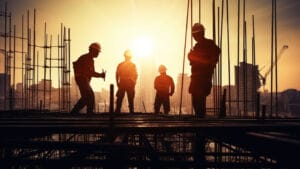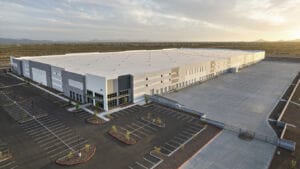Commercial buildings are a vital part of the American economy. They provide jobs and support businesses of all sizes. However, many commercial buildings are not as safe as they could be in a natural disaster like an earthquake. Many business owners need to reinforce their buildings with soft story retrofit solutions. In this article, Pedram Zohrevand explains what soft story retrofit is, why it’s essential and what you need to know about the process.
What Is A Soft Story Retrofit?
Soft story retrofit is a process of strengthening the first floor or stories of older buildings, particularly those with weak and flexible structures prone to collapse during an earthquake. Often, a soft-story building has large open spaces on the ground level, such as a parking garage or retail space, and an upper story with living spaces.
This retrofitting process is crucial for commercial buildings such as apartments, condominiums, hotels, office towers, and other multi-story buildings due to their potential to cause severe damage and loss of life during an earthquake. Soft story retrofit is a way to reinforce the building’s structure and make it more resilient against earthquakes.
Why Is Soft Story Retrofitting Important?
Retrofitting a soft-story building can be the difference between sustaining severe damage from an earthquake and remaining intact. Soft-story facilities are typically less structurally sound because of the large, open spaces on the lower levels and the lightweight construction materials used to build them. This makes them more prone to collapse during an earthquake. By reinforcing its structure with additional bracing and reinforcements, a soft-story building can be made more structurally sound and better able to withstand the forces of an earthquake.
In addition, retrofitting a soft-story commercial building is important from an economic standpoint. Retrofitting the structure helps protect the property from damage during an earthquake, saving tens or hundreds of thousands of dollars in repairs. This can help ensure the building remains productive and profitable for many years.
What Methods Are Used for Soft Story Retrofitting?
There are several methods used for retrofitting soft-story commercial buildings. These include structural bracing, which is a process of adding diagonal bracing or steel frames to the building’s structure. Another method is base isolation, which involves isolating the building from the ground by installing seismic dampers that help absorb the shock of an earthquake. Other methods include strengthening existing walls by adding steel plates and bolts or installing additional support through concrete shear walls or plywood shear panels.
The most effective method for retrofitting a soft-story commercial building depends on the structure of the building itself and the severity of earthquakes in the area. It is essential to consult with an experienced engineer who can assess the building’s design and provide recommendations on the best retrofitting method.
Benefits of Soft Story Retrofitting
Retrofitting a soft-story commercial building can offer numerous benefits. It helps to enhance the building’s overall structural integrity, making it better able to withstand an earthquake and reducing the chance of significant damage or collapse. Retrofitting can also help protect occupants from injury in an earthquake and protect property values by keeping the building productive and profitable for many years.
For businesses, retrofitting commercial buildings can also help save on insurance costs, as insurers often offer discounts to structures upgraded with seismic improvements. Retrofitting is also an investment in a community’s safety, helping ensure that its facilities are better able to survive an earthquake and providing peace of mind to those living or working nearby.
Signs That Your Building Might Need Retrofitting
If you own or manage a commercial building, a few signs may indicate your building could benefit from retrofitting. The first thing to check for is visible cracking in walls or foundations. Cracks can show structural weaknesses that need to be addressed. Other signs include doors and windows that don’t open or close properly, floors that feel uneven, visible bulging walls, or sagging ceilings. If the walls or ceilings of your building are not straight or plumb, this could also be a sign that retrofitting is needed.
Suppose you have noticed any of these signs in your commercial building. In that case, it is essential to consult an experienced engineer who can assess the structure and provide recommendations for retrofitting. By taking the necessary steps to strengthen your commercial building, you can help protect your property and those who occupy it in the event of an earthquake.
Final Thoughts
A soft story retrofit is a necessary step in ensuring that commercial buildings are better able to withstand an earthquake. By consulting with an experienced engineer like Pedram Zohrevand and taking the steps needed to retrofit an establishment, business owners can help protect their investments and ensure that their building remains productive and profitable. It is also vital for business owners to keep an eye out for signs that their structure might need retrofitting and take action as soon as possible. Retrofitting can help protect a commercial building from significant damage or collapse in an earthquake, keeping the occupants and property safe.




